The report also covers Covid deaths. However, I'm somewhat sceptical of 'Covid' deaths as many Covid deaths were deaths 'with' Covid not 'of' Covid, so for this analysis I'm only showing the all-cause deaths.
Let's start with all-cause deaths of all people in England over 18 years of age by month from April 2021 to the end of May 2023, as shown in Figure 1.
There are three obvious points to make. Firstly, there's a worrying upward trend, which is a bit odd in the years following a supposed deadly pandemic. Secondly, that during 2022 only in September and November were deaths lower than in the corresponding month of 2021. Finally, in April 2023 all-cause deaths were higher than in April 2021. Remember, in April 2021 we still had a largely unvaccinated population doing battle with a 'raging deadly pathogen'. Why would all-cause deaths be higher this year?
Let's also just look at the overall situation with regards to vaccination. Bearing in mind that as no one knows how many people live in the U.K., the absolute accuracy of the percentage of the population vaccinated will be an approximation. Our World in Data estimated the level to be about 80% back in September 2022; it hasn't changed a lot since then. When the ONS data series started in April 2021, the ONS estimates about 46% had had at least one dose. These would nearly all have been elderly and vulnerable people.
What we're really interested in is whether the unvaccinated look to have died in their droves. Figure 3 answers this question for all ages. And, of course, the answer is a resounding 'No'. Whilst on these figures the unvaccinated made up 14% of all-cause deaths back in April 2021, when vaccination rates were relatively low, by May 2023 it had come down to just 4%.
Of course, we all know that older age groups tend to have higher vaccination rates than younger ones. So, let's look at the percentage of unvaccinated among the older age groups.
Figure 4 shows us the percentage of all-cause deaths among the 90+ age cohort, amongst whom, since May 2021, the unvaccinated have never made up more than 5% of deaths, dropping to 2% in September of 2022.
The picture is much the same among the 80-89 year-olds. Since May 2021, deaths of the unvaccinated have never been above 5%, levelling off at 3% since April 2022.
I'll finish off with the 70-79 cohort. There too you'll look in vain for a 'pandemic of the unvaccinated'. By February of 2022 the unvaccinated made up just 5% of all-cause deaths.
I could go on, but you get my point. Vaccination status is not a particular determinant as to the outcome of a bout of Covid and it never was. Furthermore, the first real test of the effectiveness of the vaccines was the Delta wave from July 2021. Yet no spike in the proportion of unvaccinated dying can be seen in any of the charts above.
If you do get tempted to visit the ONS report, do remember to be very sceptical of the 'age-standardised' data. We're back with the issue so eloquently examined by Norman Fenton, Martin Neil, David Spiegelhalter, Tim Harford et al. at various times.
For a quick layman's summary, the issue revolves around not knowing how many people are in any one age group or indeed, how big the population is overall.
Imagine you have an age cohort of 10 million people, but in fact there are 11 million. The NHS knows it's injected 9,750,000 people in that age cohort. Consequently, assuming there are 10 million in the cohort they say they've vaccinated all but 2.5% of them. But, if it turns out there are actually 11 million in the group then there's 11.4% of the population unvaccinated, nearly 5 times as many.
Now, imagine that 2,500 unvaccinated people are recorded as Covid deaths. If we thought there were 10 million in the cohort and 250,000 hadn't been vaccinated it would be assumed that 1% of all the unvaccinated had died. However, if there were really 11 million in the cohort then 2,500 deaths would represent just 0.2% of the 1,250,000 unvaccinated population.
Comment: And thus can statistics be made to dance to any tune one likes, especially when the starting base is so fuzzy.
For good measure, Figure 7 covers the four other age-cohorts covered by the ONS data. No shocks here either - and no Delta spikes.
The data in the charts above are the raw data, not age-adjusted or weighted, and they tell me that just 4% of all deaths in May 2023 were of unvaccinated people. Do I think the unvaccinated are at any more risk than the vaccinated? No. But I'm not so sure the other way round.


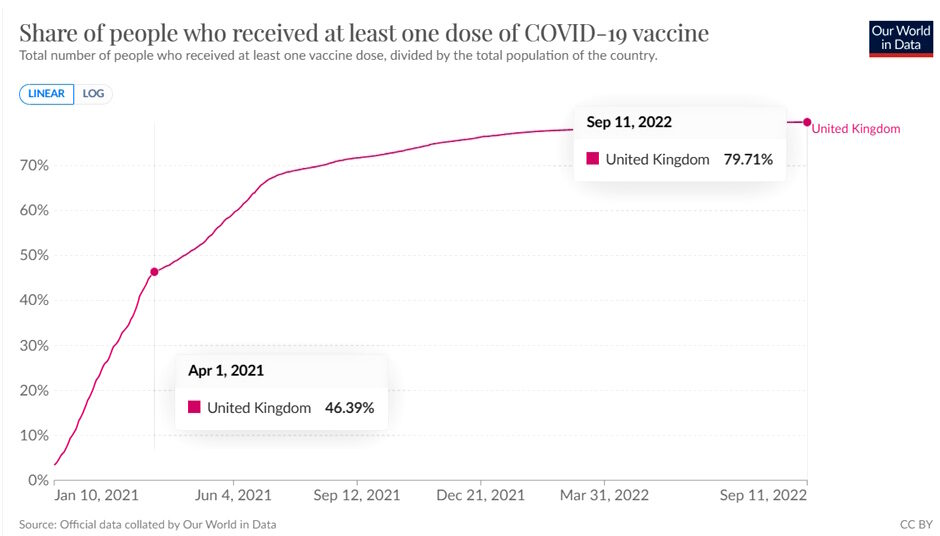
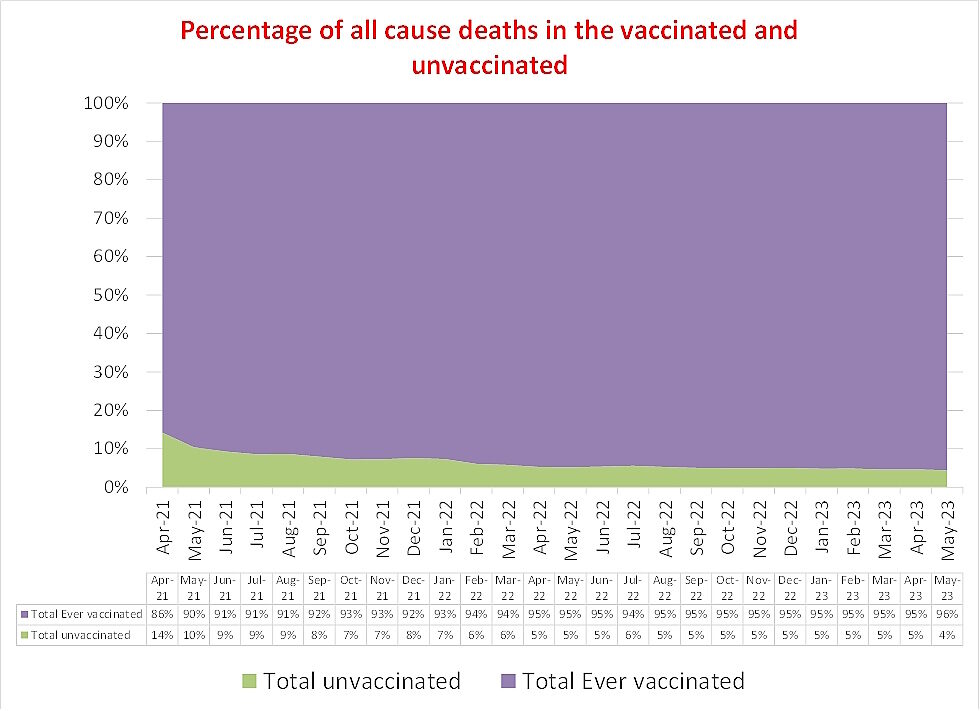
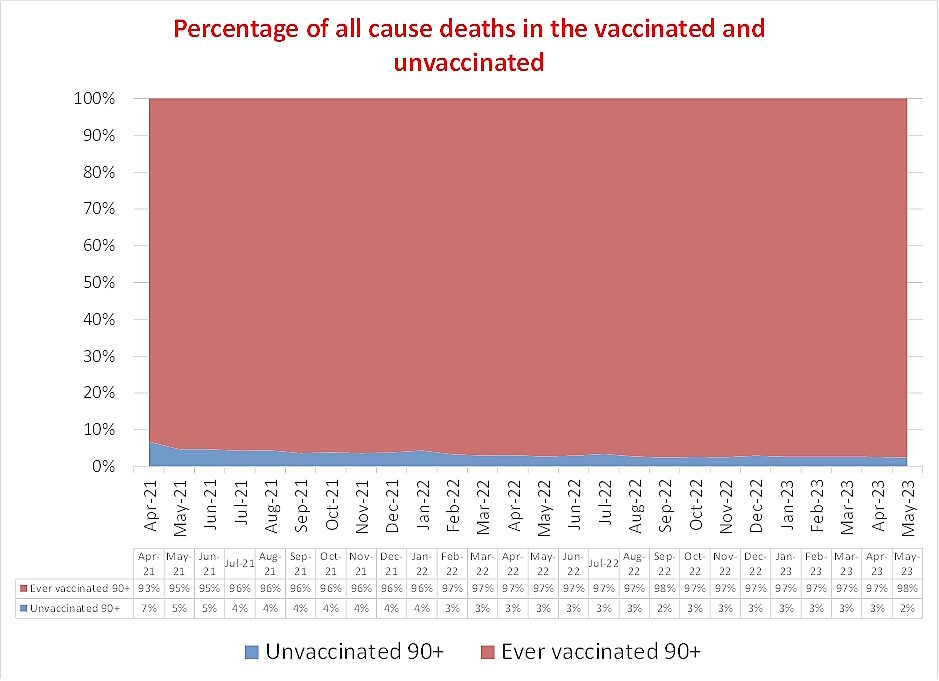
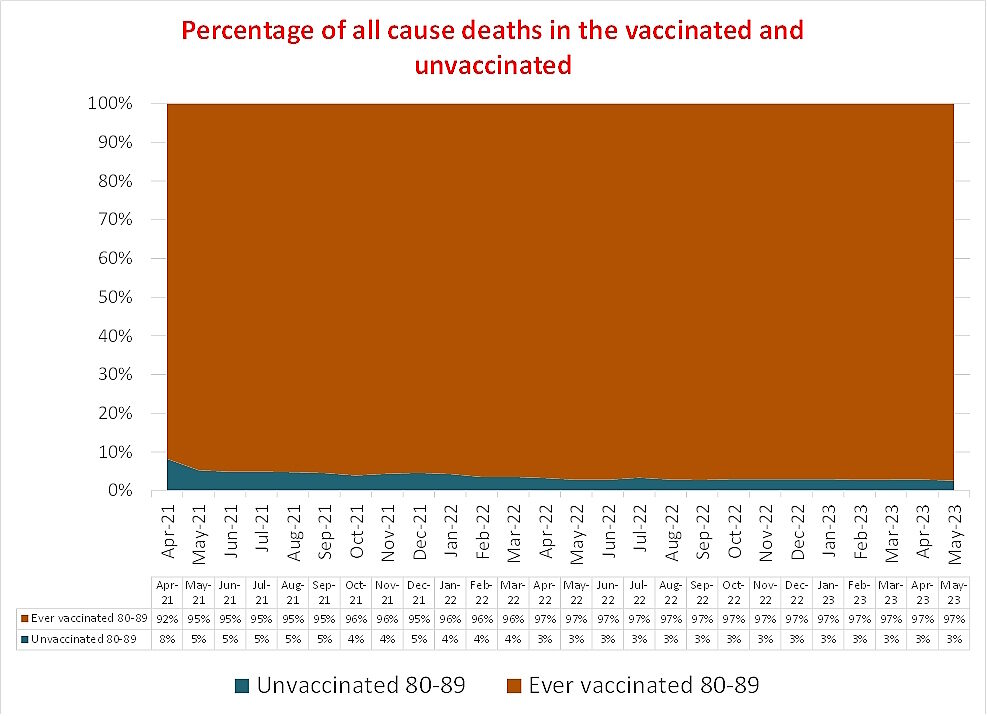

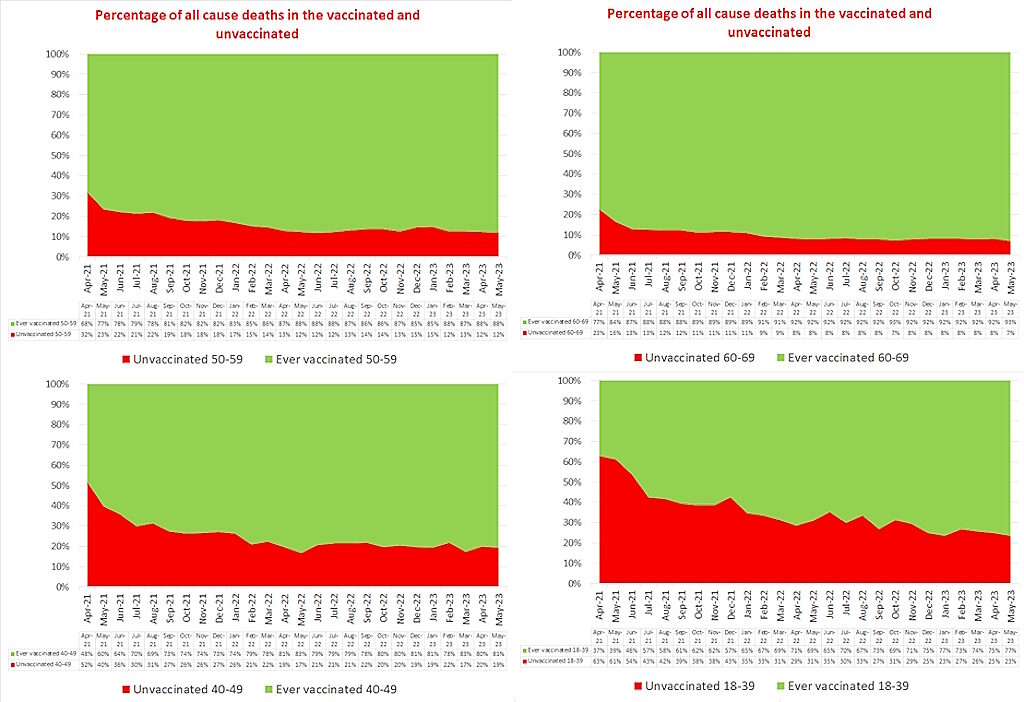



mythdeliberate lie.There you go, fixed it.